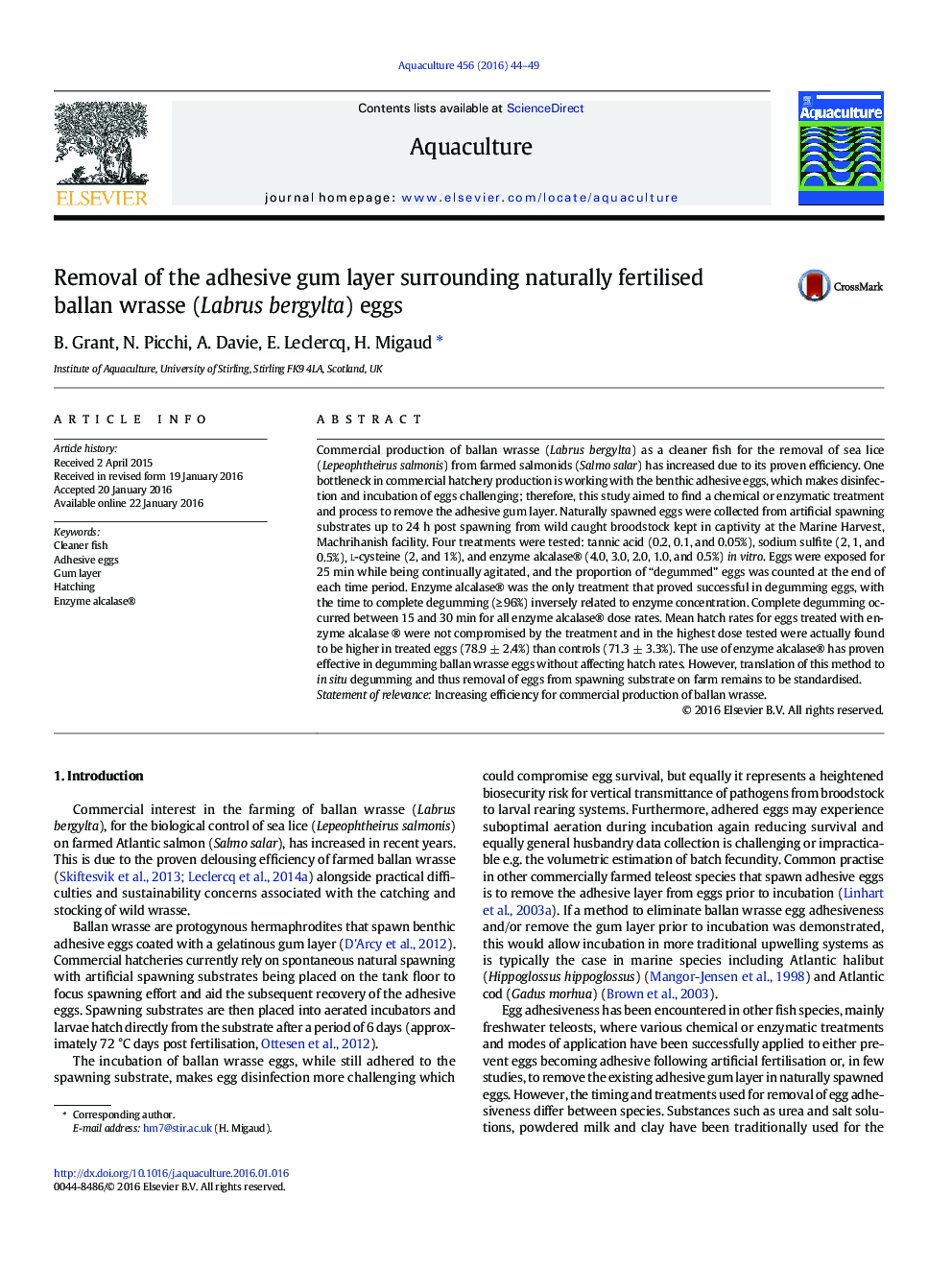| Article ID | Journal | Published Year | Pages | File Type |
|---|---|---|---|---|
| 2421471 | Aquaculture | 2016 | 6 Pages |
•Egg adhesiveness poses issues for commercial production of ballan wrasse.•Chemical screening emphasised success of enzyme alcalase for degumming eggs.•In vitro trials reveal degumming rate inversely related to enzyme concentration.•Enzyme treatment shows no negative impacts on hatch rates.•In situ degumming and commercial upscaling still to be standardised
Commercial production of ballan wrasse (Labrus bergylta) as a cleaner fish for the removal of sea lice (Lepeophtheirus salmonis) from farmed salmonids (Salmo salar) has increased due to its proven efficiency. One bottleneck in commercial hatchery production is working with the benthic adhesive eggs, which makes disinfection and incubation of eggs challenging; therefore, this study aimed to find a chemical or enzymatic treatment and process to remove the adhesive gum layer. Naturally spawned eggs were collected from artificial spawning substrates up to 24 h post spawning from wild caught broodstock kept in captivity at the Marine Harvest, Machrihanish facility. Four treatments were tested: tannic acid (0.2, 0.1, and 0.05%), sodium sulfite (2, 1, and 0.5%), l-cysteine (2, and 1%), and enzyme alcalase® (4.0, 3.0, 2.0, 1.0, and 0.5%) in vitro. Eggs were exposed for 25 min while being continually agitated, and the proportion of “degummed” eggs was counted at the end of each time period. Enzyme alcalase® was the only treatment that proved successful in degumming eggs, with the time to complete degumming (≥ 96%) inversely related to enzyme concentration. Complete degumming occurred between 15 and 30 min for all enzyme alcalase® dose rates. Mean hatch rates for eggs treated with enzyme alcalase ® were not compromised by the treatment and in the highest dose tested were actually found to be higher in treated eggs (78.9 ± 2.4%) than controls (71.3 ± 3.3%). The use of enzyme alcalase® has proven effective in degumming ballan wrasse eggs without affecting hatch rates. However, translation of this method to in situ degumming and thus removal of eggs from spawning substrate on farm remains to be standardised.Statement of relevanceIncreasing efficiency for commercial production of ballan wrasse.
